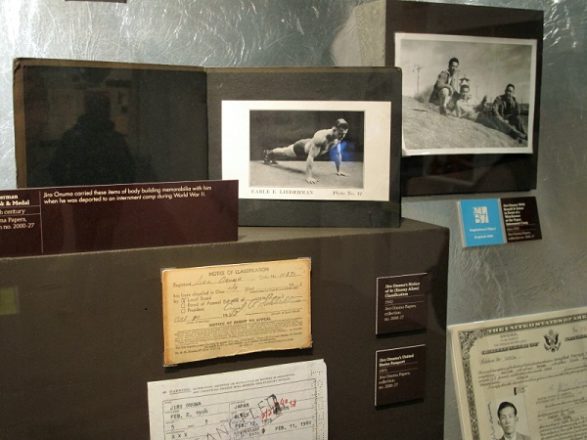
A display at The GLBT History Museum tells the story of Jiro Onuma, a gay Japanese immigrant who came to San Francisco in 1920 and who was imprisoned an internment camp during World War II. In an effort to celebrate and preserve America’s LGBTQ+ history, two bills were introduced in Congress on Friday to create a National Museum of American LGBTQ+ History and Culture. Photo: Provided by GLBT History Museum.
In an effort to celebrate and preserve America’s LGBTQ history, two bills were introduced in Congress on Friday to create a National Museum of American LGBTQ+ History and Culture.
They were introduced by Rep. Mark Pocan, a gay Democrat from Wisconsin and the chair of the Congressional Equality Caucus.
One proposal authorizes the formation of an eight-member commission with expertise in museum planning or LGBTQ+ research and culture to investigate the feasibility of establishing such a significant institution in Washington, D.C.
Lee Glaze led early gay rights protest at The Patch 55 years ago
“As our community faces unprecedented attacks and attempts to erase our history, we must preserve and protect our stories for future generations,” Pocan said in a news release. “It is vital to remember our collective past – particularly when certain states, and even Members of Congress, seek to constrain and repeal existing rights by passing bills that harm LGBTQI+ youth and our community at large.”
“This is a museum, much like we’ve done to recognize African-Americans, Native Americans, Latinos, and most recently, Asian-Americans,” Pocan explained in a video announcing the bill. “It’s a way to really recognize our community and to be able to recognize it and look at its history and look at all aspects of (the) treatment of this country, both good and bad. And this legislation would start the process so that we could also have a museum dedicated to the LGBTQI+ community.”
The commission would be tasked with several key responsibilities.
- Devise a plan of action and a fundraising strategy to financially fuel the establishment, operation, and maintenance of the museum through public contributions
- Engage in an independent review of the fundraising blueprint to ensure a robust analysis of the resources required without relying on federal funds
- Scout potential locations in Washington, D.C.
- Estimate the regional impact on other museums
- Examine the availability and cost of acquiring collections for the national LGBTQ history museum
- Consider whether the museum should operate under the Smithsonian Institution, the world’s largest museum and research complex
A legislative plan of action for the establishment and construction of the national history LGBTQ museum will be submitted to Congress following the commission’s comprehensive study.
The timeline for the commission to complete its thorough investigation is 18 months.
Once the commission finishes its work and issues its recommendations, Congress will have to consider the second bill, which is aimed at formally establishing the museum.
Pocan is adamant about the vital role of such an national history LGBTQ museum, especially in the face of what he perceives as unprecedented attacks and attempts to erase LGBTQ+ history.
The initiative has garnered support from all eight LGBTQ+ co-chairs of the Equality Caucus, including Representatives Mark Takano of California, Sharice Davids of Kansas, Robert Garcia of California, Becca Balint of Vermont, Ritchie Torres of New York, Chris Pappas of New Hampshire, Angie Craig of Minnesota, and Eric Sorensen of Illinois, who joined Pocan in introducing the legislation.
